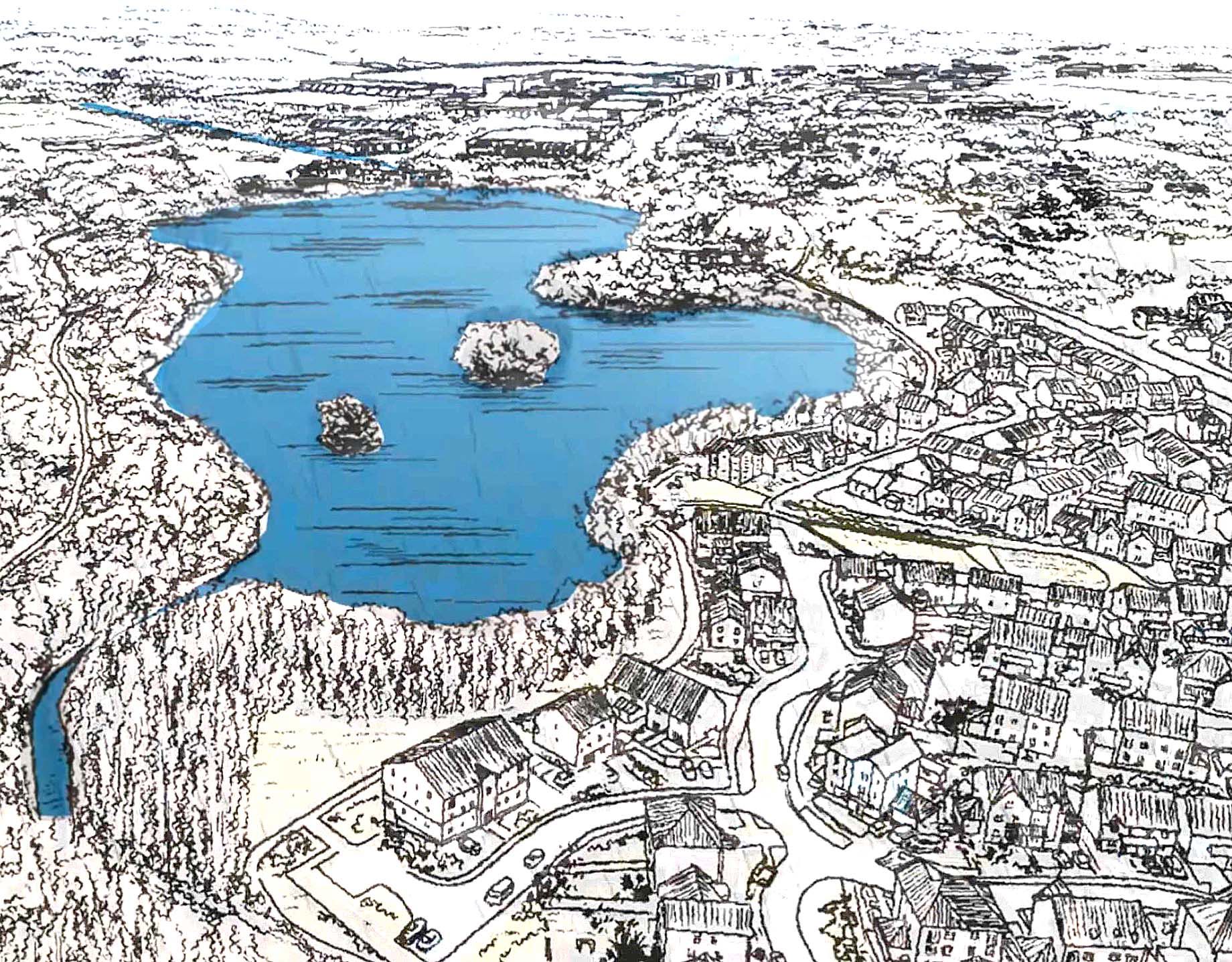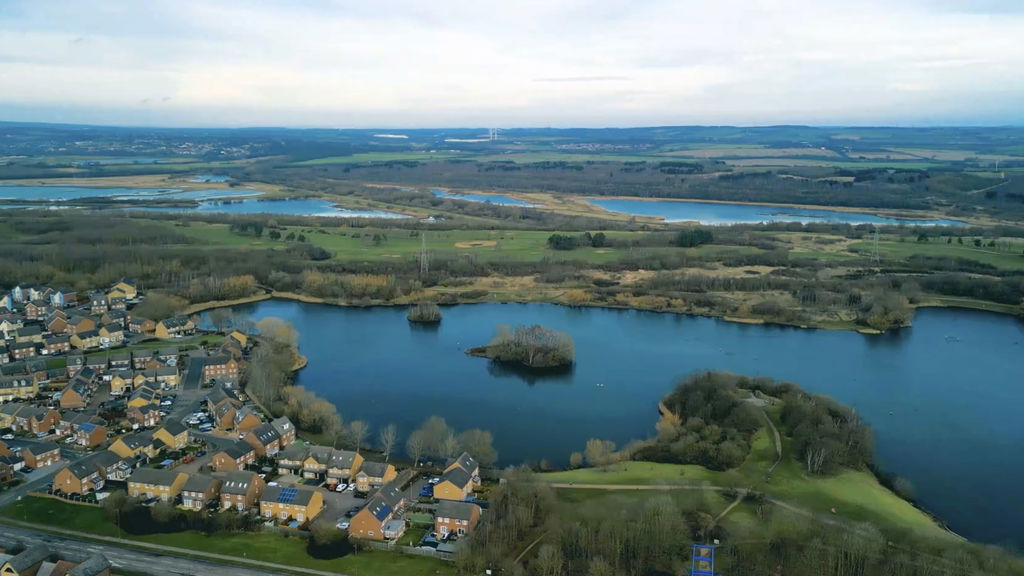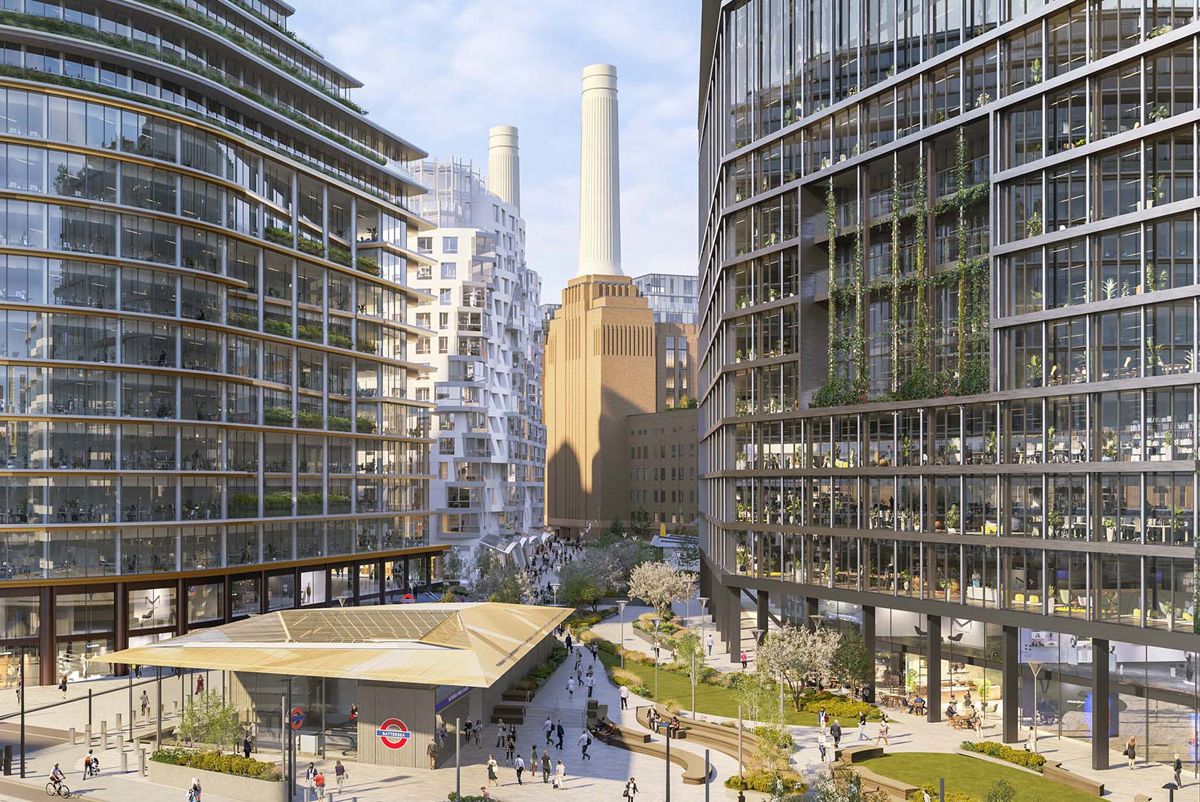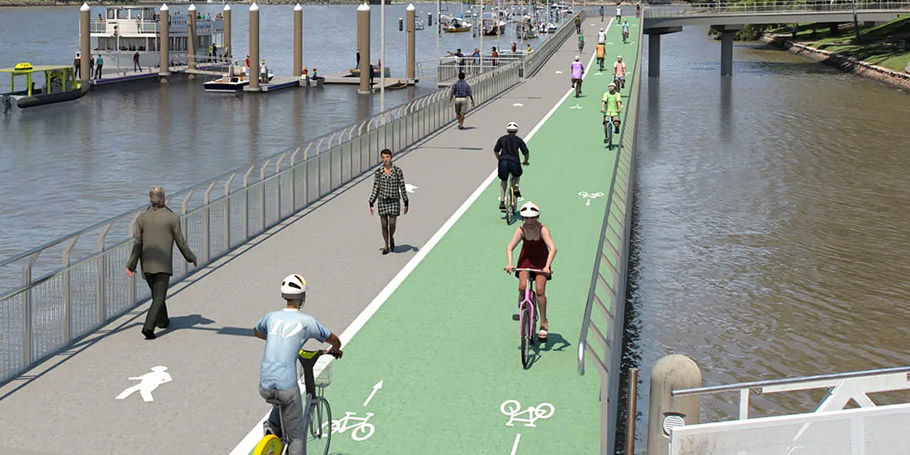How do we regenerate former industrial communities?

All over the world, the legacy of 19th and 20th century industrial, energy and mining infrastructure presents an array of regeneration challenges.
Once thriving communities that have struggled when plants or mines closed, places where whole generations lost their livelihoods. Areas of land physically shaped by industry or mining, that have now become wastelands. Missed opportunities to reimagine what a community could be and how it might thrive in a new century. The global economy may be increasingly driven by digital services, but people still want to live in thriving communities, in quality homes, with access to nature.
A new approach to industrial regeneration
Our urban regeneration work has taken many forms over recent decades, responding to all these and many other challenges. Our ethos today is informed by a desire to bring communities closer to nature, to provide sustainable economic opportunity and to build on the existing potential of a local area. It doesn’t have to cost the Earth to heal the land, stimulate economic opportunity, and strengthen communities that have been overlooked for too long.
Today, the regeneration process requires an enlightened form of masterplanning and urban design, one that reckons with past decisions and that prioritises longstanding local needs. Where a region is making its own energy transition, there are opportunities to find imaginative new uses for fossil fuel era infrastructure, rather than just demolishing the past. And with many countries and regions facing a need for affordable housing, schemes that refresh the land and unlock brownfield sites for residential development are essential.
Begin with sound economic analysis
For a vision to resonate locally and produce enduring outcomes, it must be based on sound economic modelling and informed by the community. Strong supporting evidence and a clear purpose enables projects to maintain consensus and withstand political and economic change over time. Economic planning addresses the potential of an area, in terms of business appeal, skills and employment, access to resources and transport, and many other key factors.
We work with our clients to understand the economic potential and impact of proposals, developing comprehensive solutions that deliver both quick wins and long-term strategy. The only way this can be achieved is through close collaboration with politicians, funders, transport authorities, and community leaders to agree a collective vision backed by practical, investable plans that protect what makes a place unique, while reinventing it for the future.
Discover how we created an economic masterplan for Southern Auckland, the first of its kind in New Zealand, connecting economic strategy with urban planning.
Regenerate former mining sites
Wherever mining facilities have closed, whether due to global competition or changing demand, they often leave a physical mark on the land. The challenge is to adapt and reimagine this industrial legacy, in ways that unlock value for the local community. Over 30 years ago, Arup began work in the town of Wath, in Rotherham, South Yorkshire. Here we embraced nature to transform the mining legacy of its former mining site at Manvers into a thriving commercial and community hub, with a much-loved lake and parkland at its heart.
Watch our film on the regeneration of Wath Manvers:

Redeveloping brownfield sites offers huge and progressive potential by linking regeneration to environmental goals and economic stimulus. The Ellen MacArthur Foundation's recent 'Building Prosperity' report, developed with contributions from Arup, shows that redeveloping brownfield sites could unlock €575 billion of potential annual revenue across the European built environment value chain.
Focus on placemaking and people
Masterplanning provides an opportunity to think through how ageing assets can take on new roles for communities and address longstanding needs. A masterplan serves many purposes but at their heart, they are about the human experience of the people who will live, work in and visit an area. True ‘placemaking’ requires a vision that addresses social as well as physical renewal.
Successful regeneration of industrial sites requires long-term thinking and flexible planning frameworks that are scalable and adaptable over time. This enables site owners to bring dynamism back to locations, and improve their economic, social, cultural and environmental potential.
Successful regeneration schemes must make an honest reckoning with a place’s meaning and history. To regenerate a town or community requires a deeply human response, drawing on everything we know about communities, nature, economics, society, to form a rich, and shared vision of the future.
Malcolm Smith
Australasia Cities Leader
Find new uses for old infrastructure
Old industrial and energy infrastructure often ends up becoming a physical memorial to a town or city’s past. But it can also play an active, if radically different, role in the community. The idea isn’t new, but today, ageing factories, power stations or water infrastructure are being repurposed in more thoughtful and creative ways. This helps a place retain part of its physical identity and history, while providing much needed new residential, commercial or cultural facilities – all spurs to a place’s growth and appeal.
Learn more about Arup's work transforming the site of the UK's last coal-fired power station into a zero-carbon technology and energy hub for the East Midlands.
Discover how circular economy principles can shape the regeneration of older energy infrastructure.

Arup has delivered a masterplan for the future development of London's Battersea Power Station – one of the city's largest regeneration projects – transforming a brownfield site into a vibrant new district.
Restore and embed nature
Nature is increasingly recognised as a vital part of human environment. The protection and extension of biodiversity surrounding a development is equally becoming a regulatory requirement and recognised as a crucial success factor in a scheme’s ultimate appeal.
Whether it’s developing urban meadows, regenerating parkland or simply bringing more trees into the streetscape, nature-based design solutions are often the most affordable and scalable way to restore, regenerate and enhance an environment. And they’re always the lowest emission method to strengthen an area's resilience to climate change.
Landscape architecture plays a role here too, acting as a design corrective, providing nature-based solutions to local issues of urban cooling or dealing with intense rainfall. Our team develops landscape strategies and frameworks at city or district level to address urban challenges such as car use, climate resilience, air pollution, urban heat islands, encouraging economic activity while improving people’s connection with nature and access to active travel.
Learn more about our landscape architecture services.
Seizing the opportunity
In the 21st century, the regeneration of former industrial areas presents many opportunities for wider economic, social and environmental renewal. We believe that, with careful planning and design, this can be a cost effective and locally-driven activity that both addresses overlooked local potential while contributing to urgent national goals, like house building, employment growth and the need to hit net zero targets.
Explore
Discover more about our expertise:
Get in touch with our team
Get in touch with us
If you'd like to speak to one of our cities experts about any of the issues raised on this page, or a potential collaboration, then please get in touch.





